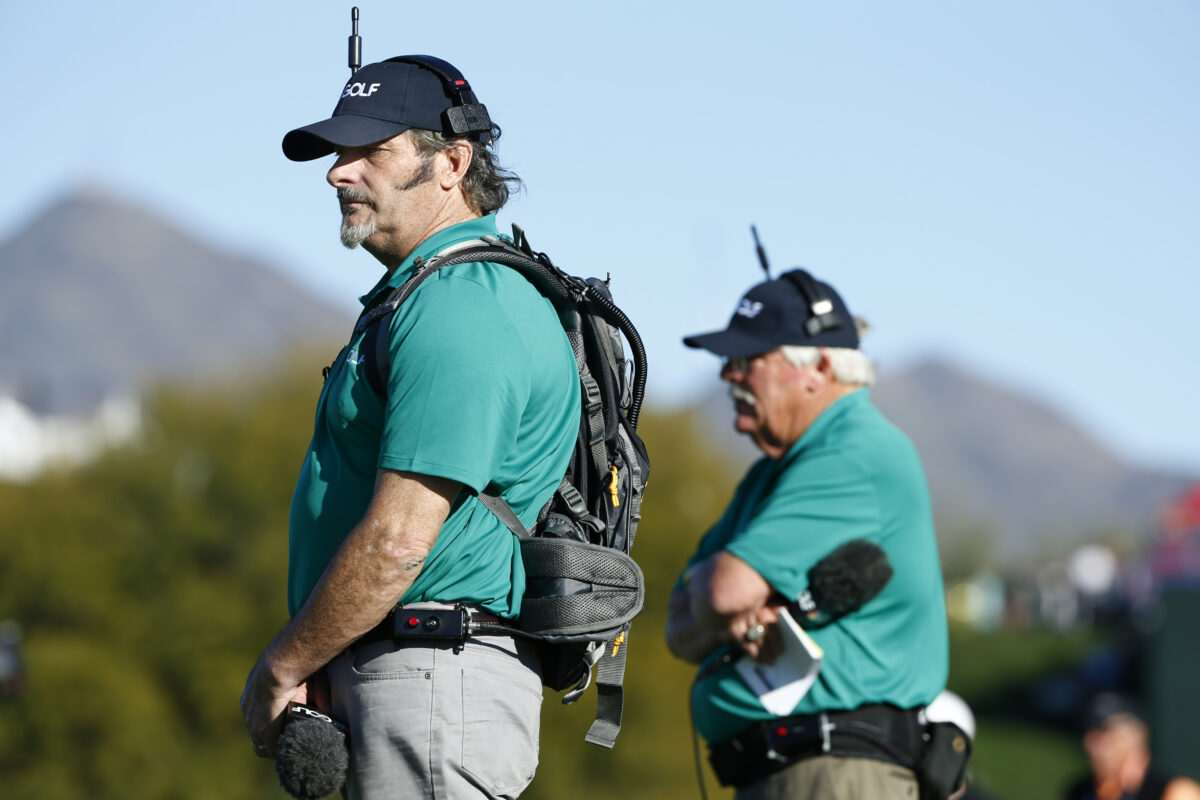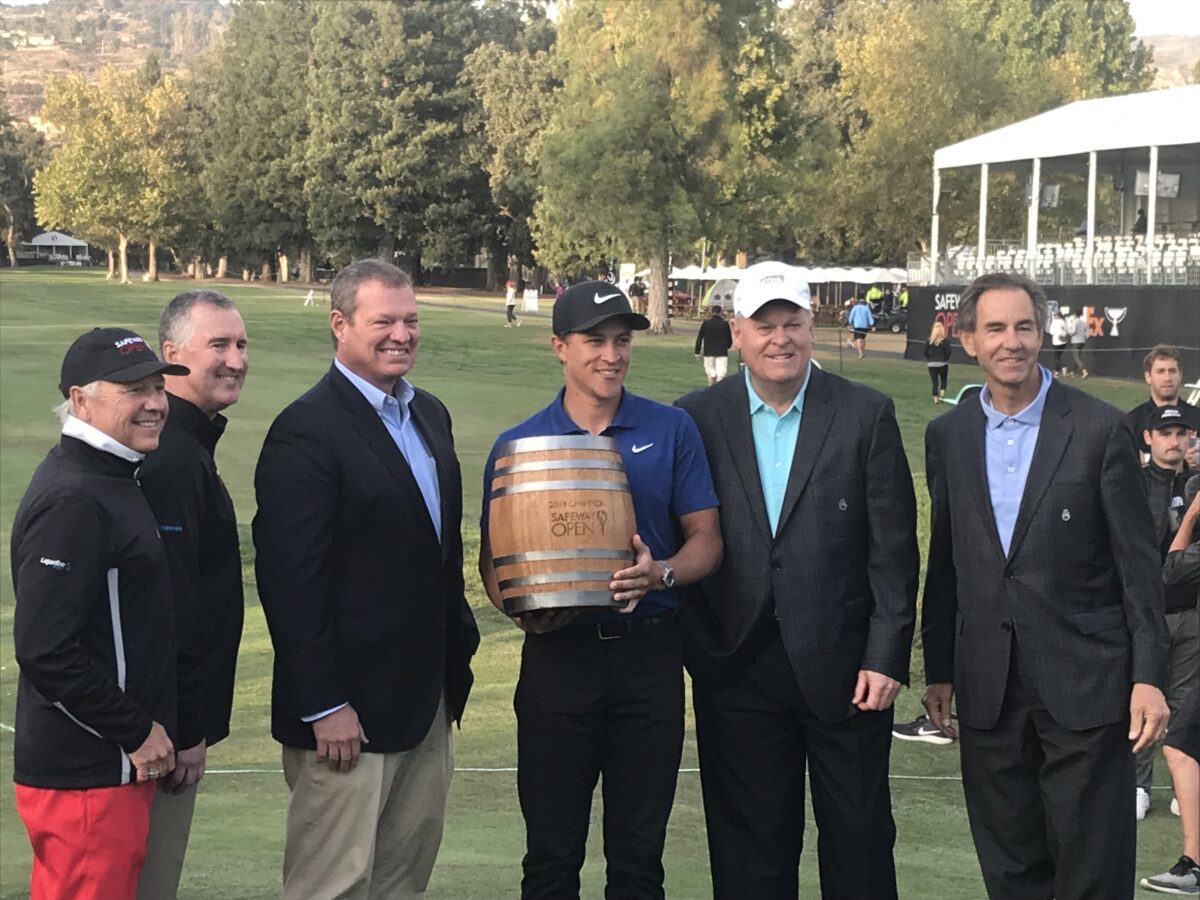Each PGA Tour season starts with new faces and new names for fans to learn and embrace. Whether it is a raw rookie fresh off the Korn Ferry Tour, a college star getting a handful of starts and making some waves or a European player taking a shot at the U.S.-based tour, there is always something new.
But in recent years, the new faces aren’t just on the golf course. The faces have come with new voices to the broadcast booths of PGA Tour events. That carousel seems to be spinning faster and faster these days.
At NBC, Gary Koch and Roger Maltbie, two long-time golf announcers who are both in their 70s, are out as 2023 begins. They are replaced by Brad Faxon and Smylie Kaufman, two more former players.
At CBS, Nick Faldo left as lead analyst at the end of the network’s coverage in 2022. Faldo will be replaced by Trevor Immelman, a former Masters champion. Immelman, who was already on the CBS team, is 42. Faldo is 65, and he apparently wanted to work a more limited schedule. CBS decided that didn’t work for the network, so Faldo retired.
So the voices get younger as 2023 begins, and it seems like a lot of change for the two main networks that cover the PGA Tour (Golf Channel covers its own PGA Tour tournaments as well as sharing producing and voices at times with NBC and CBS). But have things really changed that fast this year, or is it just the world of social media that has pushed the idea that changes have come at a break-neck speed?
Remember Johnny Miller? It might seem like a long time ago when Miller stepped down as a straight-talking lead analyst for NBC. But it was only in 2019 that he ended a nearly three-decade career with the network. Former PGA champion and Ryder Cup captain Paul Azinger stepped in for Miller.
That was about the same time, by the way, that CBS, in an effort to freshen its golf broadcasts, said goodbye to Gary McCord and Peter Kostis, a pair of voices who had been with CBS for three decades themselves.
And of course, David Feherty didn’t hold back when explaining reasons why he left NBC/Golf Channel to go to be LIV Golf’s biggest broadcaster.
“Money,” Feherty told the Toledo Blade. “People don’t talk about it. I hear, ‘Well, it’s to grow the game.’ Bull … they paid me a lot of money.”
The LIV Golf Invitational Series is still without a television partner, but Feherty’s move gave the Greg Norman-led, Saudi Arabia-funded upstart circuit a known name on its broadcast team. He made his debut at LIV Bedminster.

Changes happening all the time
And there have been other changes. Jim “Bones” MacKay, longtime caddie for Phil Mickelson, became a respected on-course commentator for NBC before returning to caddie duties for Justin Thomas. John Wood, another longtime tour caddie, is drawing raves for his work for NBC.
That might seem like a lot of changes in a short period of time. But remember, it was just 20 years ago, in the 2002 season, that Ken Venturi ended a run of 35 years as the lead analyst for CBS.
Networks understand that golf needs to appeal to a younger audience. It’s great that people 50 and over love and watch the sport, because that demographic tends to have more leisure time and more disposable income — things that advertisers crave in a viewer. But the sport needs younger viewers, too, fans who will embrace the sport now and follow the young stars for the next 15 or 20 years or even longer. So younger voices might seem like the right thing to do.
It’s not that Maltbie or Koch or McCord or Kostis did a bad job of reporting on PGA Tour events or were rapidly deteriorating as broadcasters. But inevitably, older voices get pushed aside by younger voices. That’s true in any part of media or entertainment.
Faxon has some experience in broadcasting and has shown he can hold his own. Kaufman, once a rising player on the tour whose game disappeared with a string of missed cuts in his last three years, proved to be a breakout star working for Golf Channel and NBC last year. Immelman has been a strong part of the CBS team for several years and should fit in fine at Augusta National, where he won in 2008.
But it will be different watching golf as 2023 begins not hearing Faldo or Maltbie or Koch. Some familiar voices, such as Mark Rolfing at NBC and Ian Baker-Finch at CBS, remain, as do the main anchors for their network, Dan Hicks at NBC and Jim Nantz at CBS.
Will it be better or worse? Chances are it will be about the same, with the networks throwing in some technical innovations but hanging on to the tried and true method of broadcasting a PGA Tour event. Sometimes it isn’t the voices that need to be freshened, it is the approach to the broadcast itself that gets stale.
Either way, golf will look familiar in 2023 on NBC, CBS and Golf Channel, even if it sounds a little different.
Larry Bohannan is the golf writer for The Desert Sun. You can contact him at (760) 778-4633 or at larry.bohannan@desertsun.com. Follow him on Facebook or on Twitter at @larry_bohannan. Golfweek’s Cameron Jourdan contributed to this report.
[listicle id=778312746]
[mm-video type=playlist id=01es6rjnsp3c84zkm6 player_id=01evcfxp4q8949fs1e image=]






